I discuss rather a lot concerning the untapped energy of DaVinci Resolve’s Primaries tab and the way we actually must be maxing out its instruments earlier than we transfer on to narrower or extra complicated changes. However there’s a knob proper inside this Primaries tab that I very not often use, and that’s Saturation.
Is that as a result of I don’t care concerning the shade saturation of my grades? No. It’s as a result of I don’t like what this knob does to my photos. And in consequence, I’ve developed different strategies for manipulating the general colorfulness of a picture after I’m grading.
So on this article I wish to rapidly present you a few these strategies and discuss you thru the rules that I like to bear in mind after I’m manipulating saturation in my photos.
Coloration saturation rules in Resolve
As you’ll be able to see from the display under, I’ve arrange a model new mission the place I’ve performed nothing in any respect besides for a similar two issues that I at all times do on the very starting of a mission. I’ve arrange my shade administration and I’ve arrange the template node graph that you just see right here on my higher proper hand facet.
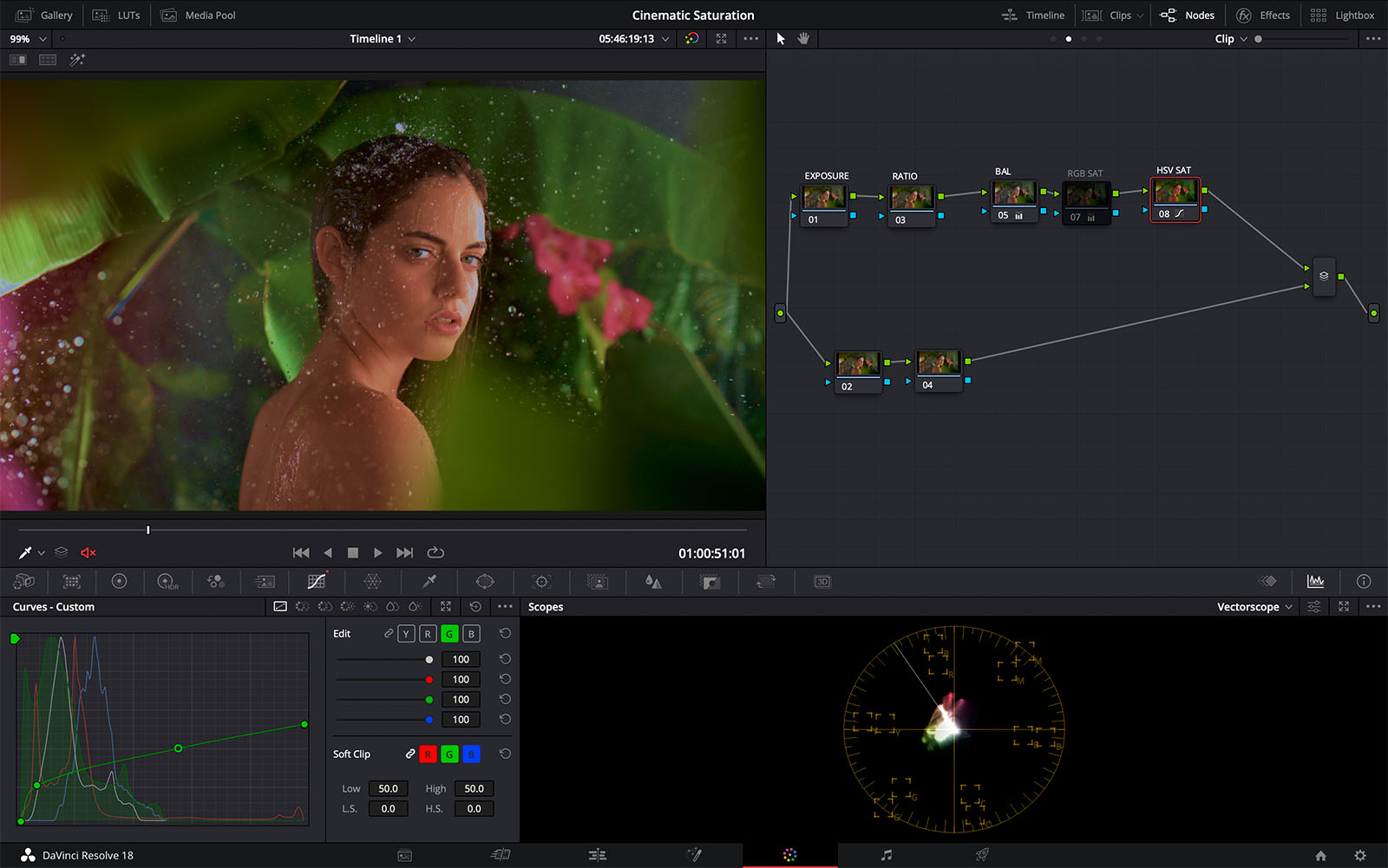
We’ll be Coloration Administration in a later article, however you’ll be able to study extra concerning the node graph setup within the following video.
Sustaining your steadiness
The very first thing that I wish to emphasize earlier than I even start how I’m going to introduce saturation into the picture, is that steadiness begins to develop into actually vital while you’re manipulating the saturation of a picture—particularly while you’re growing saturation.
Primarily, if in case you have a small imbalance in your shot—prefer it’s a little bit too purple or too inexperienced—that imbalance goes to develop into exaggerated as you begin to add shade into the picture.
“Stability begins to develop into actually vital while you’re manipulating the saturation of a picture.”
So earlier than you consider including saturation into the picture, you must revisit your steadiness node and just be sure you’re utterly proud of it. In the event you don’t you then’ll in all probability find yourself having to return to that steadiness node and recalibrating to get a correct start line. And that’s simply losing effort and time.
Discovering the candy spot
I take advantage of the identical standards for this each time, and that’s to optimize my pores and skin tone and maximize my shade separation. A helpful rule of thumb for that is to verify your vectorscope and attempt to get the sign mass in order that it’s straddling at the very least two separate quadrants within the ‘scope
For instance, under is an instance the place the colour separation is de facto low as a result of every part’s crammed up right here into this higher left quadrant.
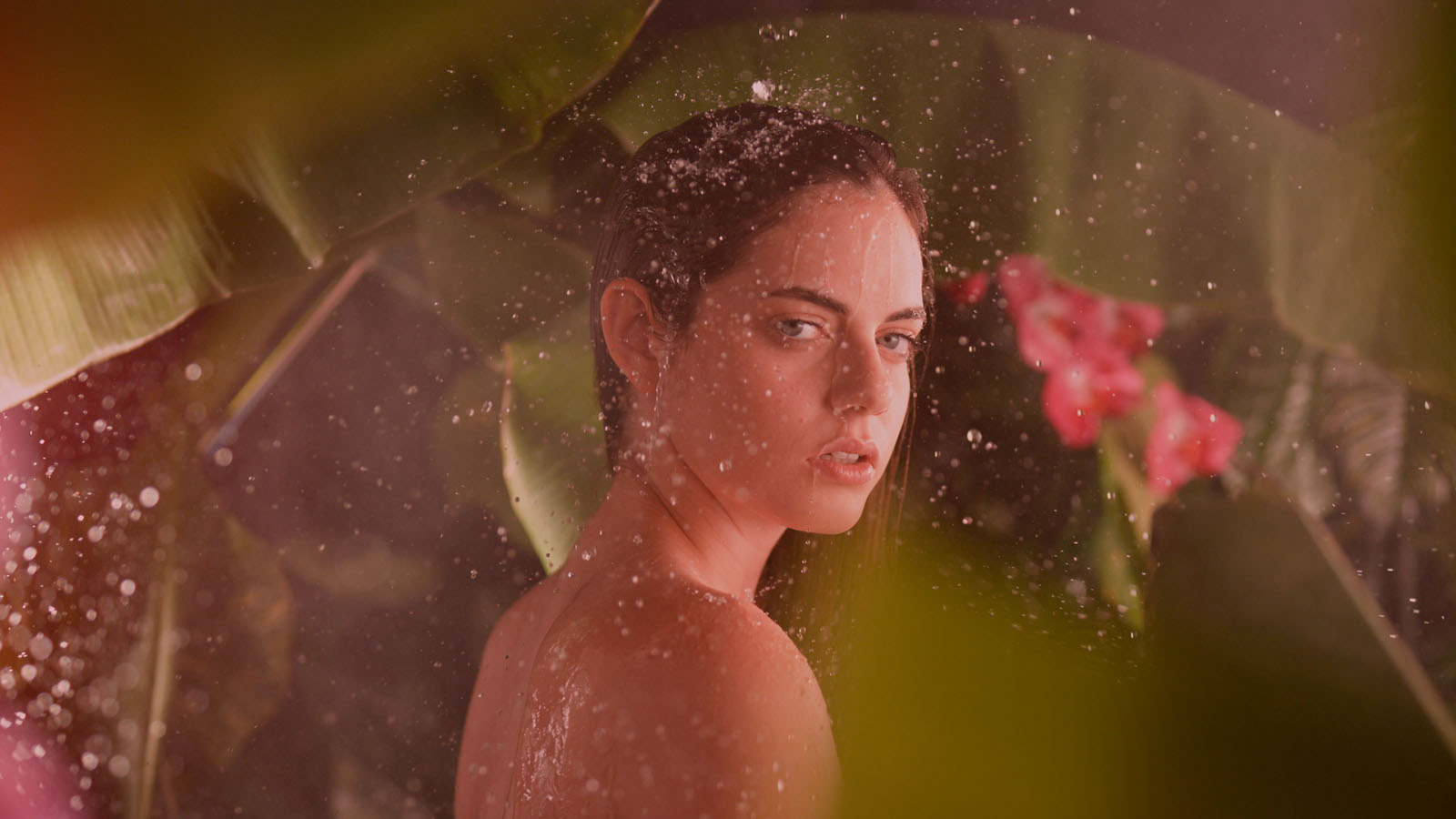
And the identical right here, with the colours all squeezed into the higher proper.
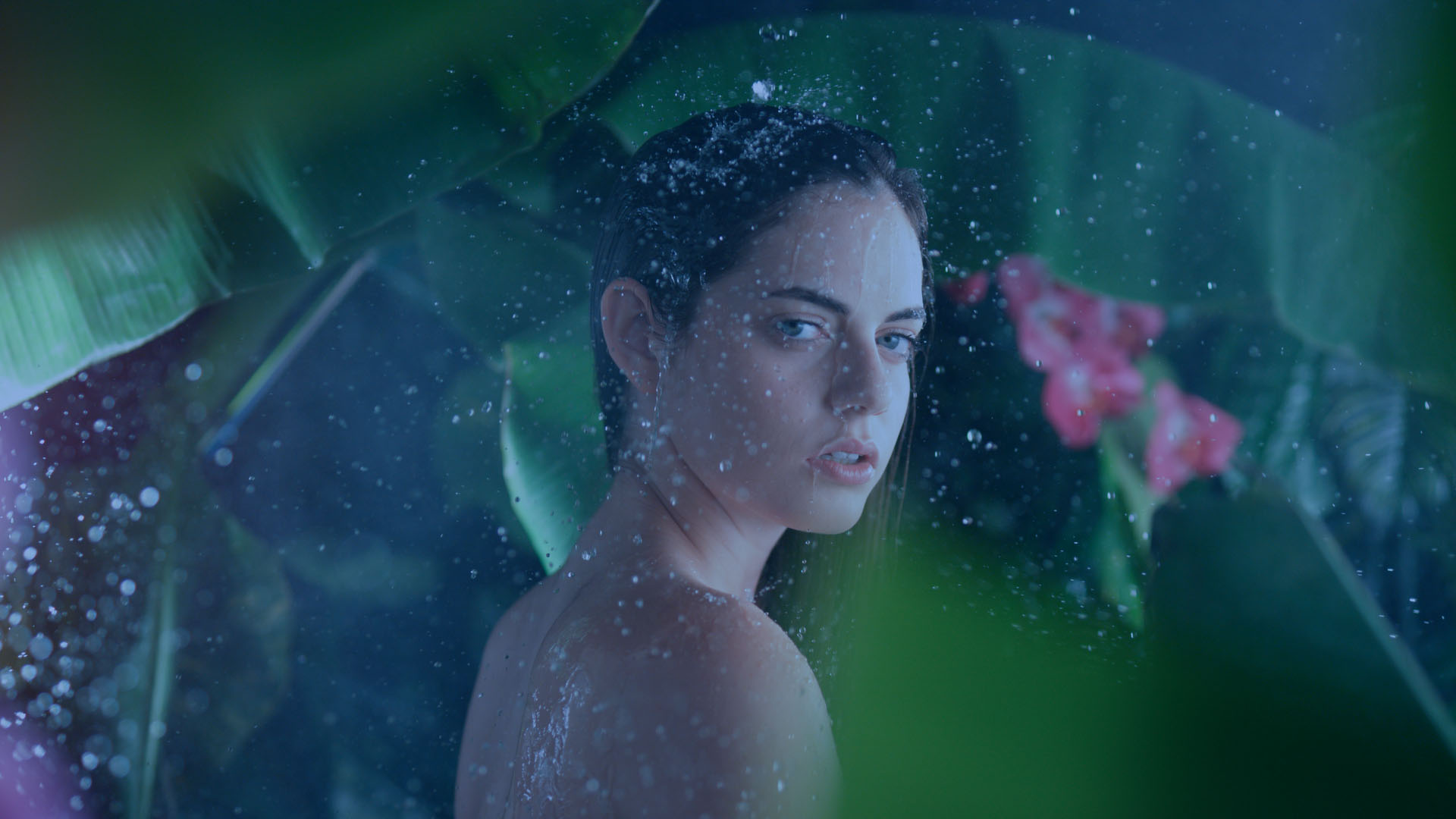
So as an alternative, attempt to regulate your picture utilizing the Offset ball in order that the sign mass straddles these two quadrants whereas preserving your pores and skin tone—that’s the primary and larger consideration. When you’ve discovered this candy spot, you’ll have separation and optimized pores and skin tone. Now you’re in a a lot better place for including shade saturation into the picture and getting good outcomes.
Including the colour saturation node
So with that out of the best way, let’s add a brand new Serial node after the steadiness node, utilizing Choose/Alt+S, and check out the Saturation knob that you just’re right here for.
Let’s say your consumer has determined that they actually wish to max out the colour ‘pop’ in no matter you’re engaged on. So you’ll be able to go loopy with the saturation, however as you do that, ask your self at what level does it go too far? At what level are you now not getting visually engaging outcomes?
Take this instance…
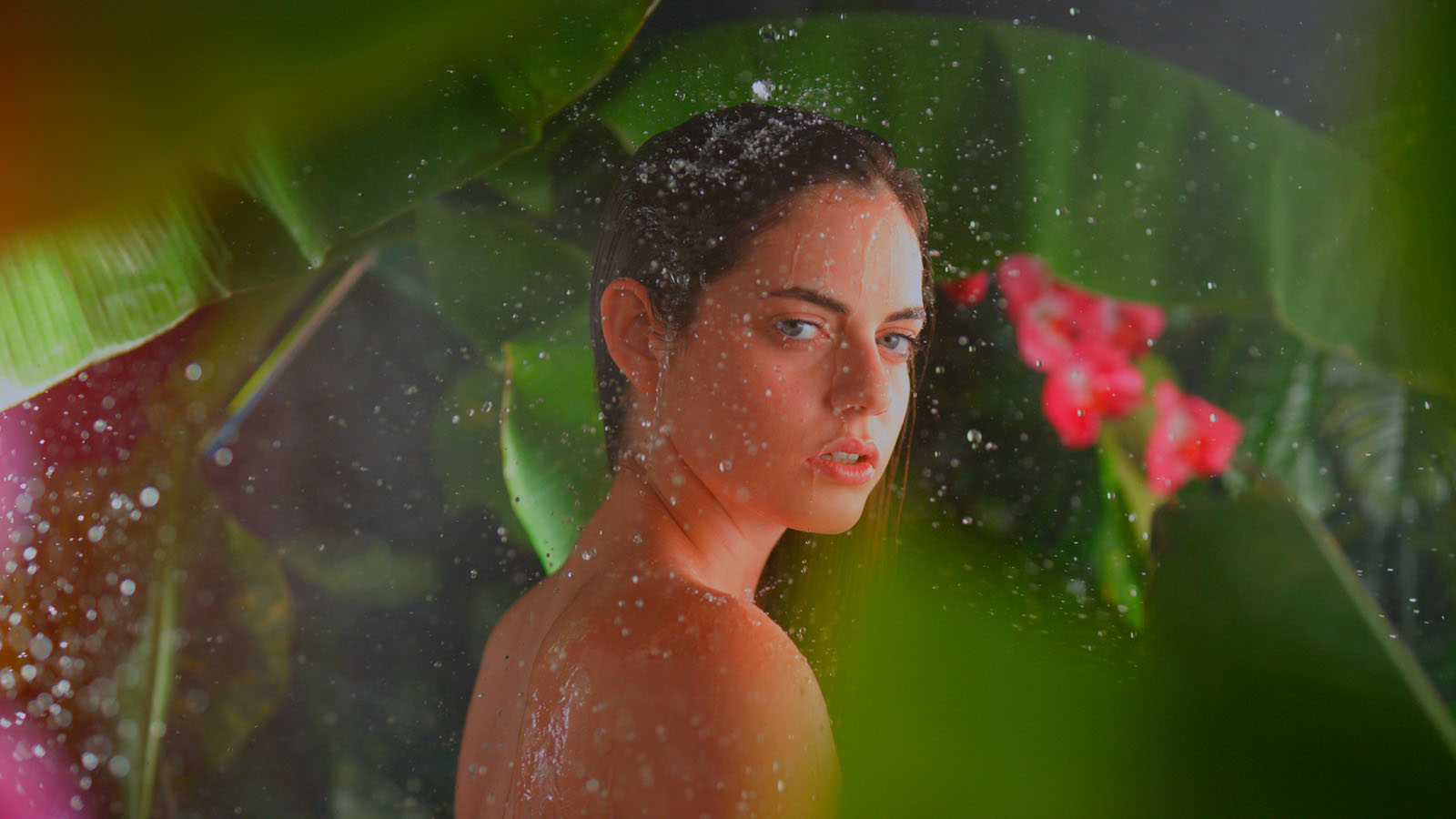
It’s nearly maxed out. And in technical phrases, you’ll see within the vectorscope while you flip it on and off that you just’re increasing saturation. In different phrases, you’re getting extra colours spreading in all instructions.
However there’s a degree previous which the picture simply doesn’t actually look good anymore, proper? It feels garish and bizarre. It feels very video. So concentrate on this boundary as you’re employed the saturation—it’s not nearly getting a sign that appears good on a scope. It’s about getting a picture that appears good.
While you’ve reached the purpose that’s so far as you’re comfy with, seize a nonetheless of it and hit Cmd/Ctrl+D to disable the node whereas conserving a reference for comparability. Now it’s time to strive one thing a little bit totally different.
Cinematic saturation in Resolve
We’re going to strive implementing saturation in a really totally different, “cinematic” approach. However it requires a few steps that I’ll clarify as I am going. First, create a brand new serial node (Choose/Alt+S), then right-click on the node, and choose Coloration Area->HSV.
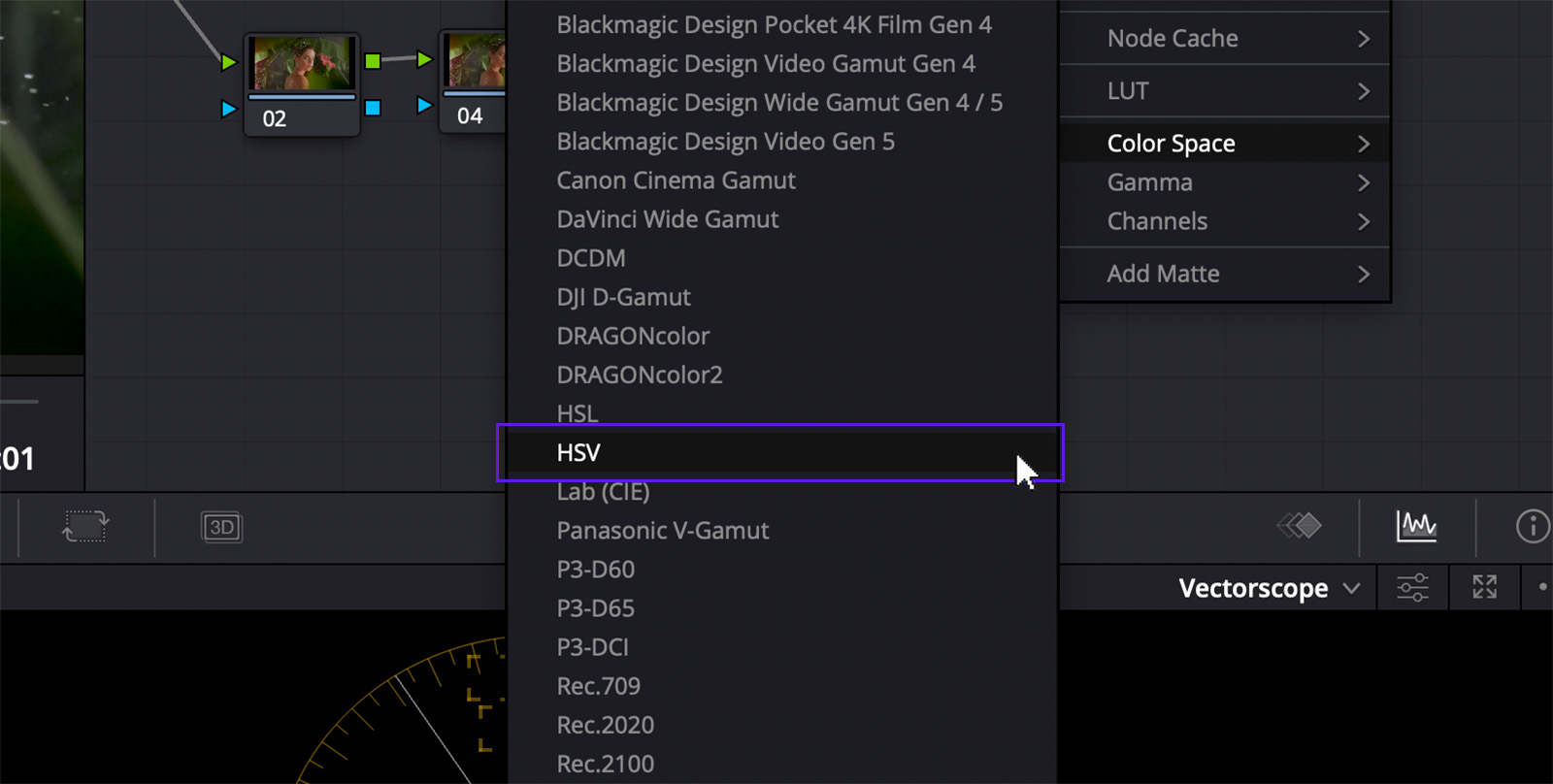
Subsequent, proper click on on the node and choose Channels, then flip off Channel 1 and Channel 3. This tells Resolve that, for the span of this node alone, you wish to transfer out of an ordinary RGB shade house or mannequin and into an HSV shade house or mannequin.
In an RGB shade mannequin, we’re specifying a selected shade by saying there’s this a lot purple, this a lot inexperienced, and that a lot blue in it. And that’s just like how we specify any shade inside HSV. However as an alternative of purple, inexperienced, or blue, we’re specifying hue, saturation, and worth—with worth being loosely equal to brightness.
And there are a selection of the reason why we’d wish to do that, however one in all them is in order that we will explicitly manipulate the Saturation channel.
Now you’ve obtained a devoted channel for it, which you don’t get while you’re working in RGB. That’s why we disabled Channel 1 and Channel 2 earlier, as a result of Channel 1 is Hue, and Channel 3 is Worth (brightness). So now all we have now left is Channel 2—Saturation.
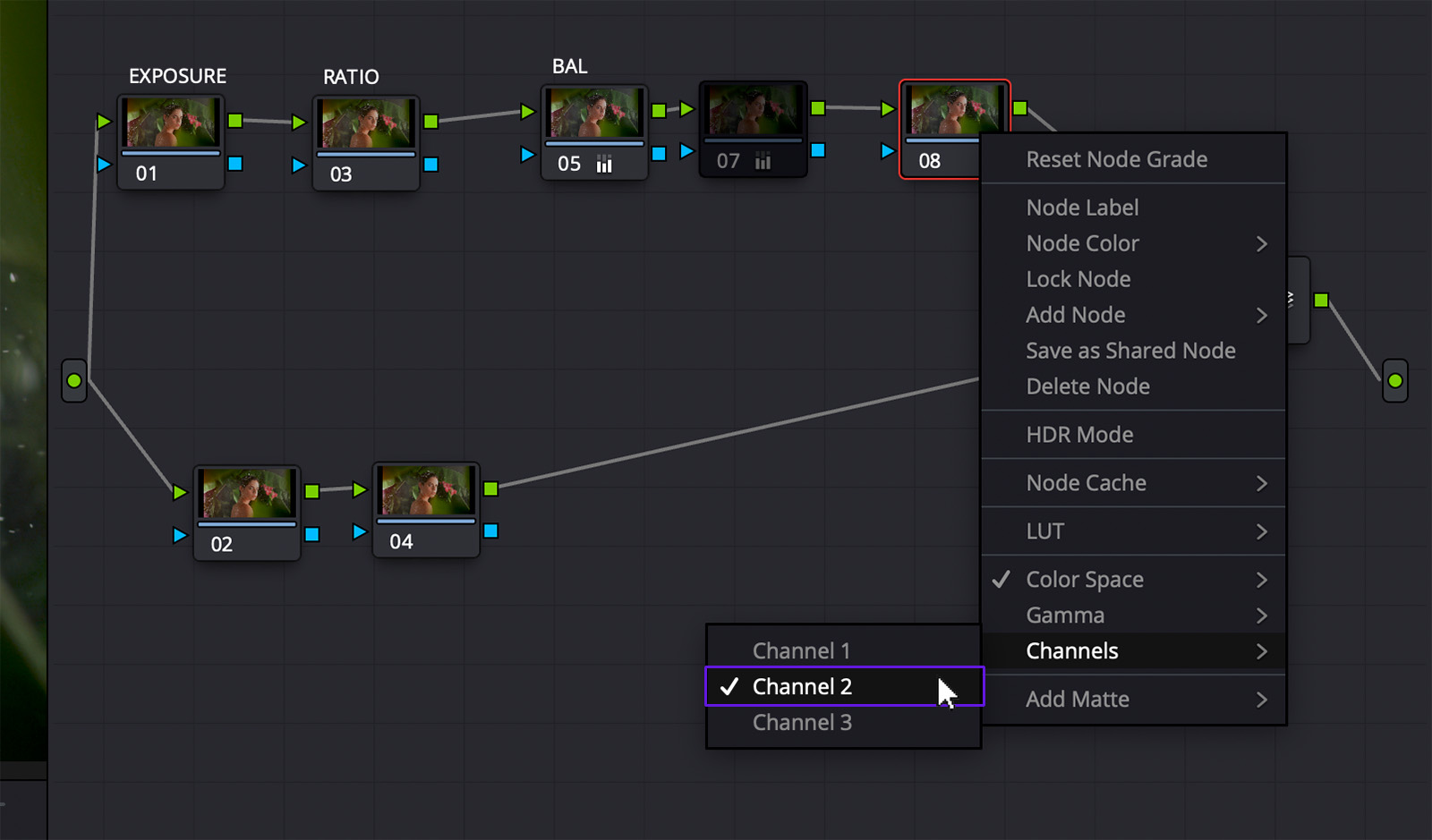
Working with a separate Saturation channel
Now when you regulate your Achieve wheel you’ll get some very totally different outcomes to the node we had arrange originally. Even when the extent of saturation is comparable, the picture look just isn’t. Although admittedly these are each exaggerated examples…
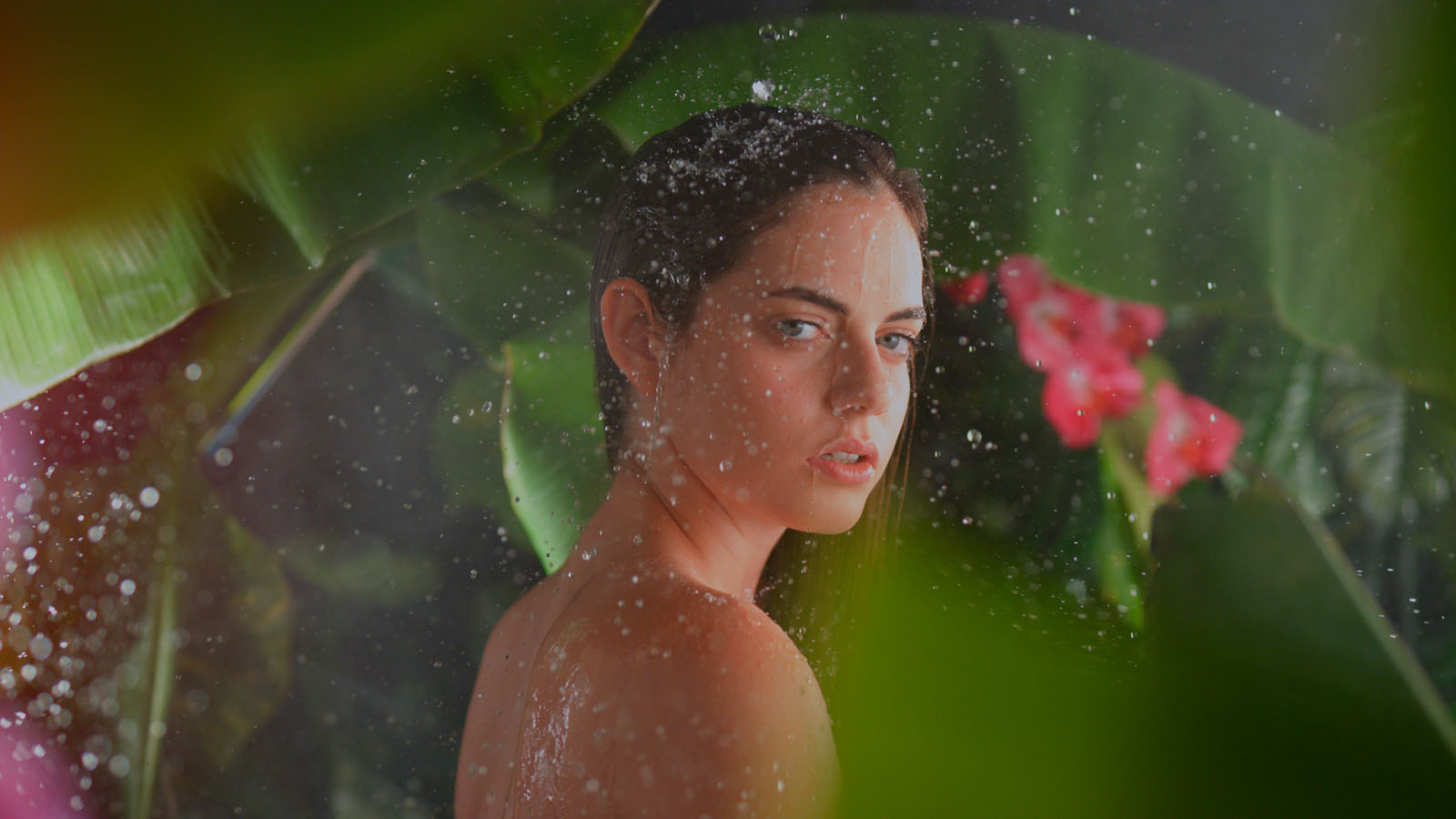
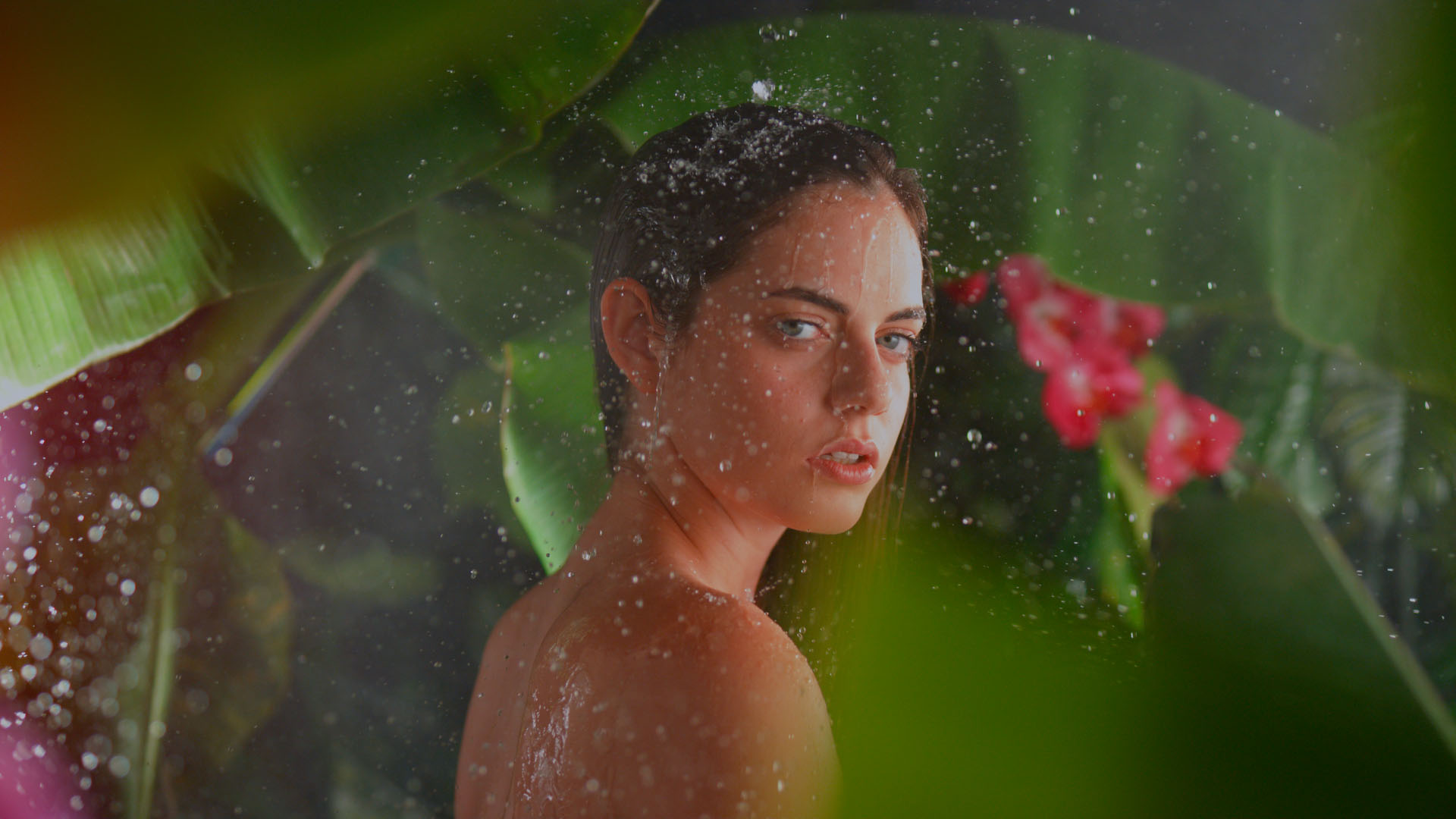
Regardless of this exaggeration, I really feel that one is clearly higher than the opposite. You may not—through which case, be at liberty to stay with the Saturation knob.
But when, like me, you favor the second picture, it would allow you to to consider it as subtractive saturation. Which is nearer to how issues work in the true world.
Apples to apples
Let me clarify, if I’ve an apple of a sure redness, a sure saturation, after which I’ve a redder apple, an apple with extra saturation standing proper subsequent to it, that second apple is definitely reflecting much less of the sunshine hitting it. It’s absorbing extra of the sunshine. So by definition it’ll be a little bit bit darker than the primary apple.
So when you check out what you probably did along with your HSV node, you’ll discover that while you flip it on and off, you’ll get darker areas of this picture as they develop into extra colourful or saturated.
That’s why I feel it’s value exploring and why, for me, it’s inherently superior to the extra video-style saturation that you just get from the extra standard Saturation adjustment, the place your luminance will both be the identical or brighter due to the maths being utilized when your dial the saturation up.
Extra management over your saturation
There are different advantages to the HSV node strategy. For instance, while you enhance the saturation with the Achieve wheel, it impacts every part—low saturation, medium saturation, excessive saturation. All of them get cranked up, which is identical conduct you get from the default Saturation knob.
However what if you wish to be a bit extra selective? What if you wish to enhance the saturation of decrease shade saturation areas with out altering the upper saturation parts of your picture?
Gamma saturation
That turns into very easy to do once we are on this HSV node. You can, for starters, simply strive adjusting utilizing your gamma. While you flip your gamma to the proper, it’ll enhance saturation within the decrease center saturation areas with out driving saturations which are already actually sizzling making them look worse.
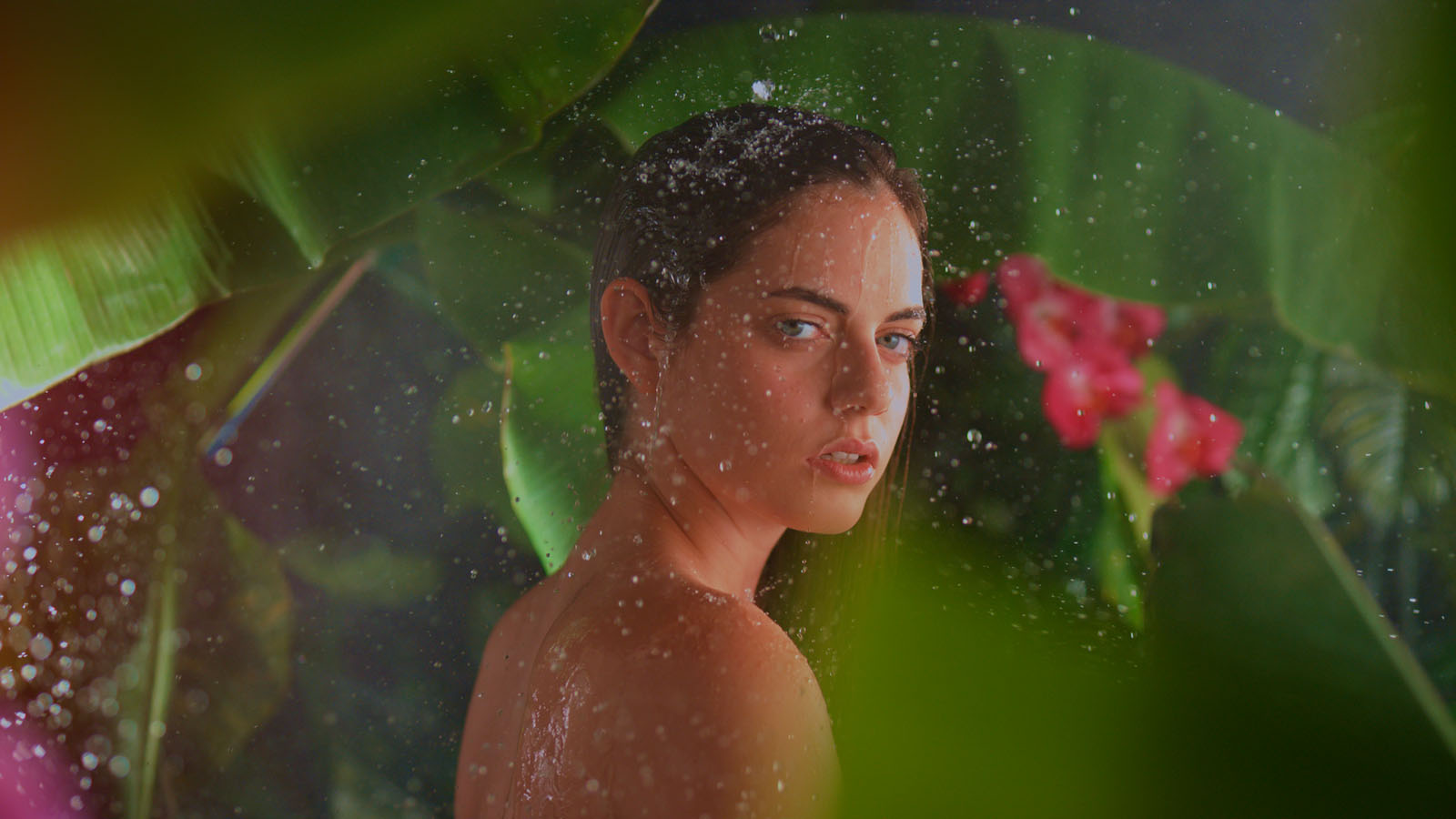
Customized shade saturation curves
If you wish to get even fancier, flip off your gamma, and head to your Customized Curves, the place you’ll be able to actually draw your personal saturation curve. For instance, you would possibly solely wish to saturate the decrease shade saturation portion of the picture with out affecting the remainder of the picture, or you possibly can make it extra gradual—you possibly can actually sculpt any saturation curve that you just wish to.
“An HSV node offers you the flexibleness to sculpt a extra nuanced strategy.”
It’s in all probability not the place you wish to begin, as a result of customized curves can get extra sophisticated and extra time consuming than merely spinning achieve or gamma. However it’s value emphasizing that, along with having a mannequin that may usually really feel extra cinematic than the mannequin utilized by the saturation knob, an HSV node offers you the flexibleness to sculpt a extra nuanced strategy to the colour saturation of your picture.
There’s much more to it than only a knob that you just twist left and proper.
Coloration saturation is a big, sophisticated topic and we will get approach higher or approach worse ends in our grades relying on how we sort out it. Earlier than you develop your own style as a colorist, it’s one of many fundamentals of grading that you must grasp. And the extra you study, the extra you perceive that there are actually no guidelines, only a bunch of various options.















Leave a Reply